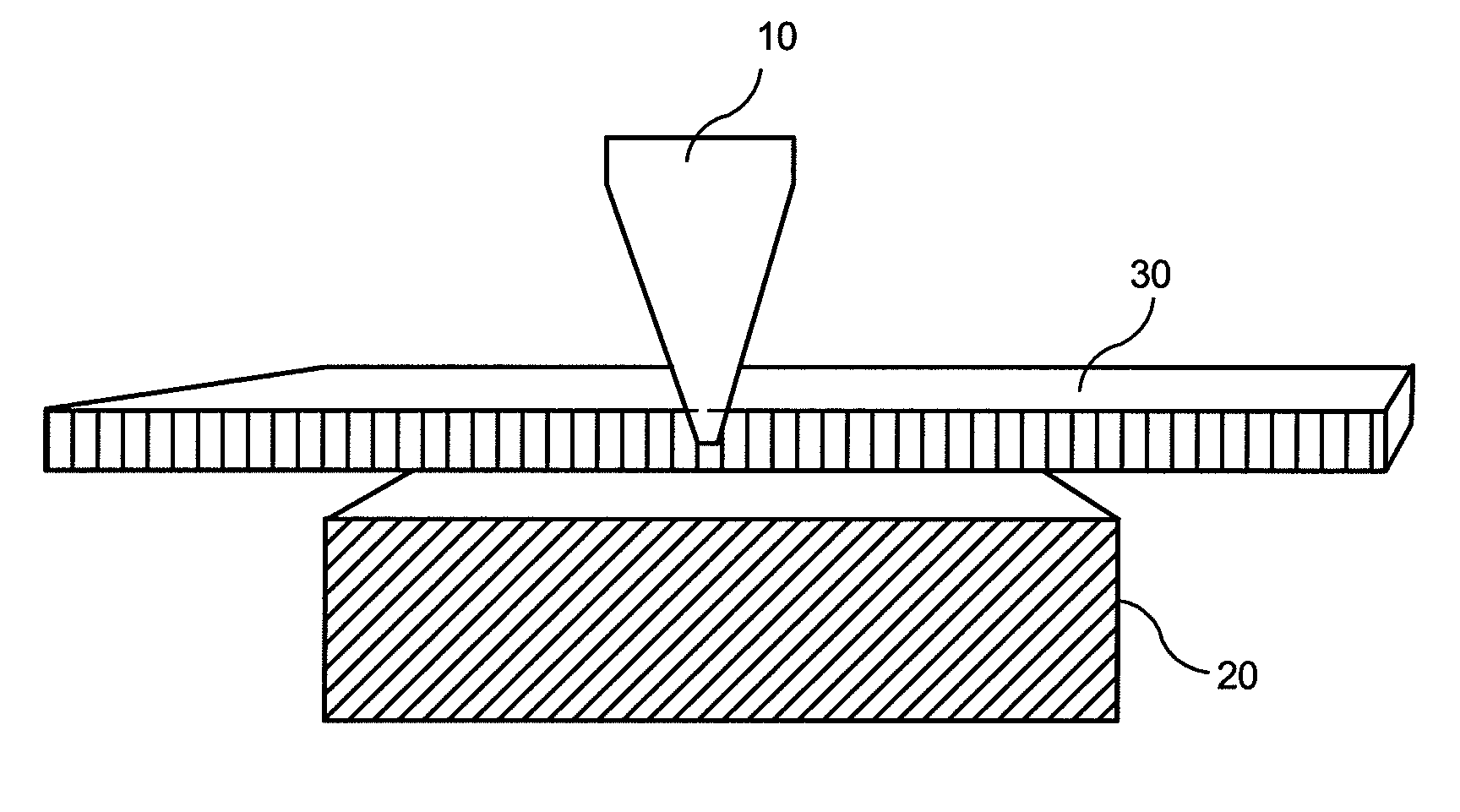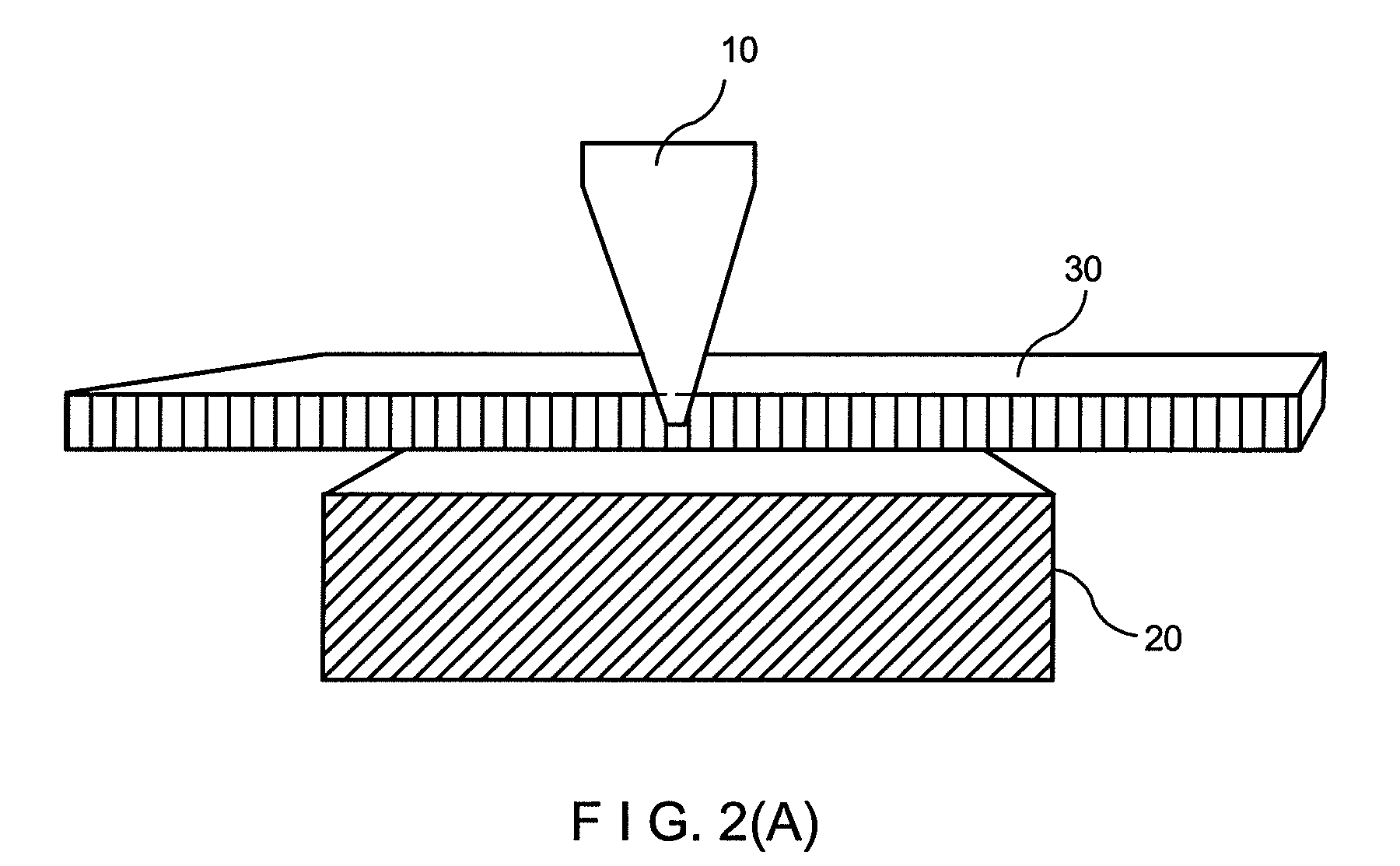Formation of a fabric seam by ultrasonic gap welding of a flat woven fabric
a flat woven fabric and fabric seam technology, applied in the direction of instruments, photosensitive materials, other domestic objects, etc., can solve the problems of insufficient resistance of adhesives to machine running conditions, inability to produce the desired seam integrity or uniformity, and the use of adhesives with other reinforcement means such as sewing terminal ends of pmc, tad or engineered fabric, to achieve the effect of enhancing pin seams and inline spiral seams, sufficient strength, and favorable to the formation of fabric seam
- Summary
- Abstract
- Description
- Claims
- Application Information
AI Technical Summary
Benefits of technology
Problems solved by technology
Method used
Image
Examples
example
Example 1
[0065]Using a 40 kHz ultrasonic gap welder, a TAD fabric was exposed to a 500 ms weld time and a 1 second hold time (i.e. after welding the horn stays in the welding position for 1 second before raising the horn) with a 40 micrometer amplitude. The gauge pressure on the seam area was 144 kPa and the trigger force (TRS) was 111 N.
[0066]The result of the process is a TAD fabric with strengthened seam yarn terminations (see FIG. 3), which experienced minimal terminal seam yarn pullback during a trial run on a paper machine. In addition, the resulting seam termination ends of the TAD fabric resulted in considerably more strength than seam gluing.
[0067]FIG. 6 compares the breaking strength of a fabric seam for different lengths on the interlocks for both glued and ultrasonically gap welded fabrics with seams. Evidently, the fabrics welded using ultrasonic gap welding of the present invention have higher strength than that of a conventionally glued fabric seam especially when the...
PUM
| Property | Measurement | Unit |
|---|---|---|
| width | aaaaa | aaaaa |
| thickness | aaaaa | aaaaa |
| thickness | aaaaa | aaaaa |
Abstract
Description
Claims
Application Information
 Login to View More
Login to View More - R&D
- Intellectual Property
- Life Sciences
- Materials
- Tech Scout
- Unparalleled Data Quality
- Higher Quality Content
- 60% Fewer Hallucinations
Browse by: Latest US Patents, China's latest patents, Technical Efficacy Thesaurus, Application Domain, Technology Topic, Popular Technical Reports.
© 2025 PatSnap. All rights reserved.Legal|Privacy policy|Modern Slavery Act Transparency Statement|Sitemap|About US| Contact US: help@patsnap.com



